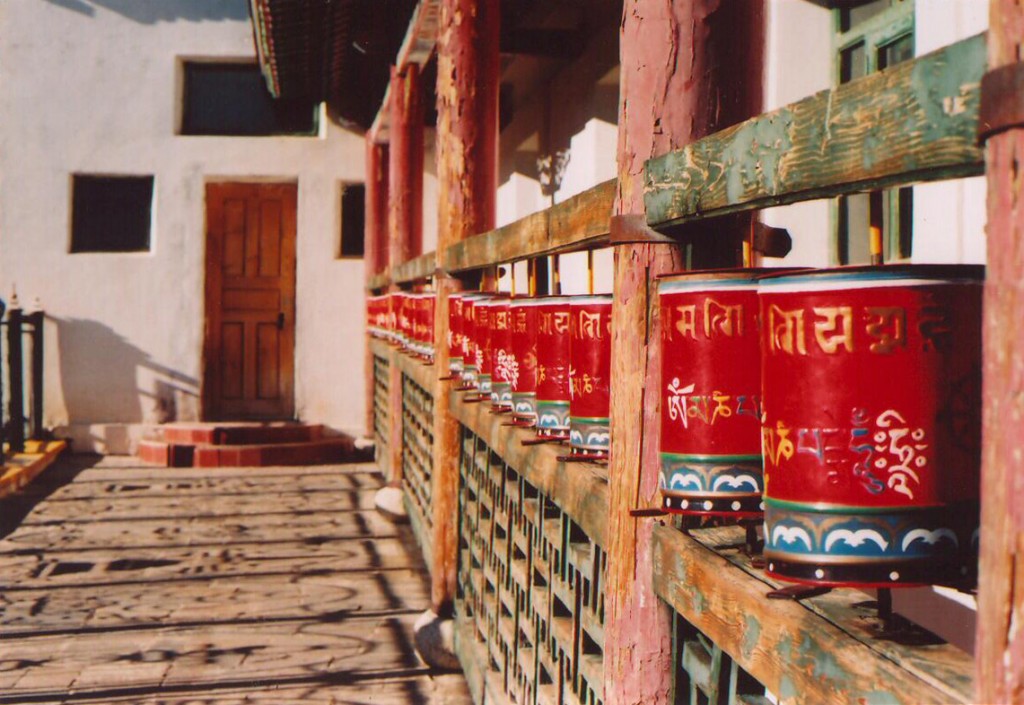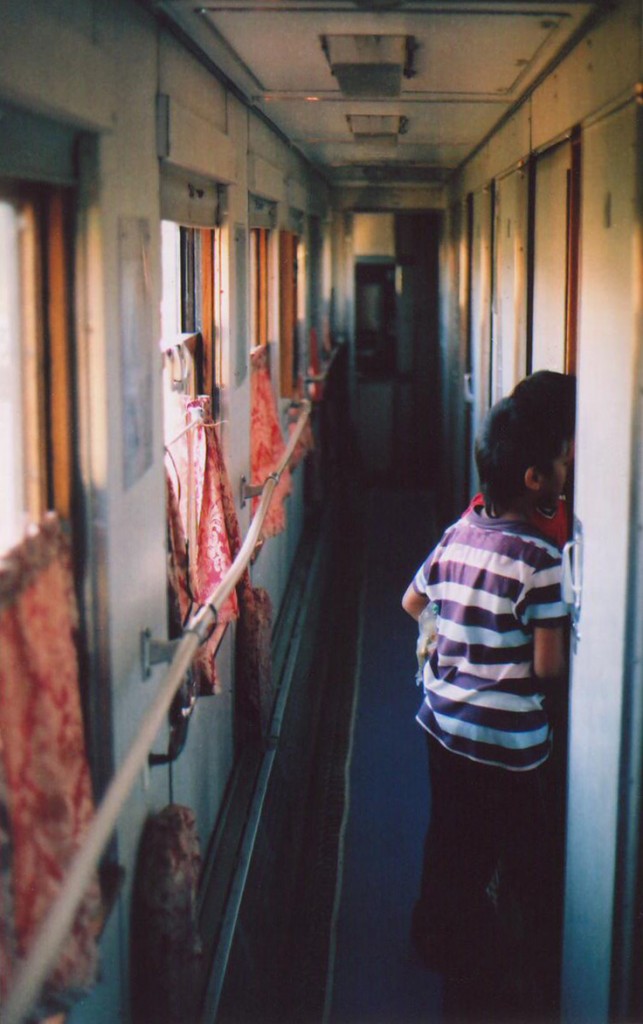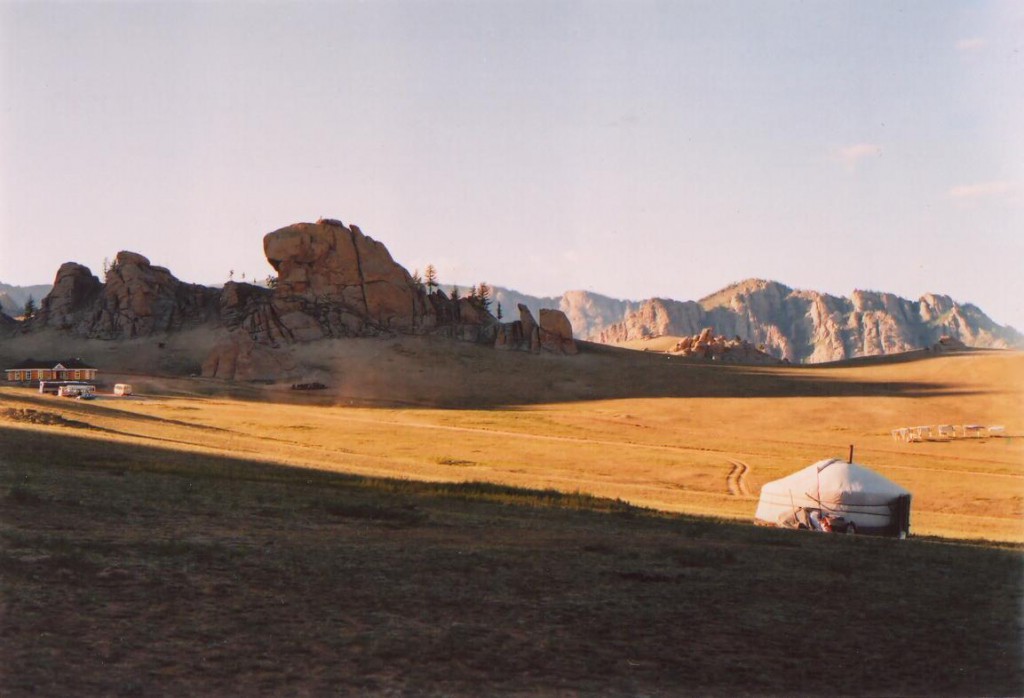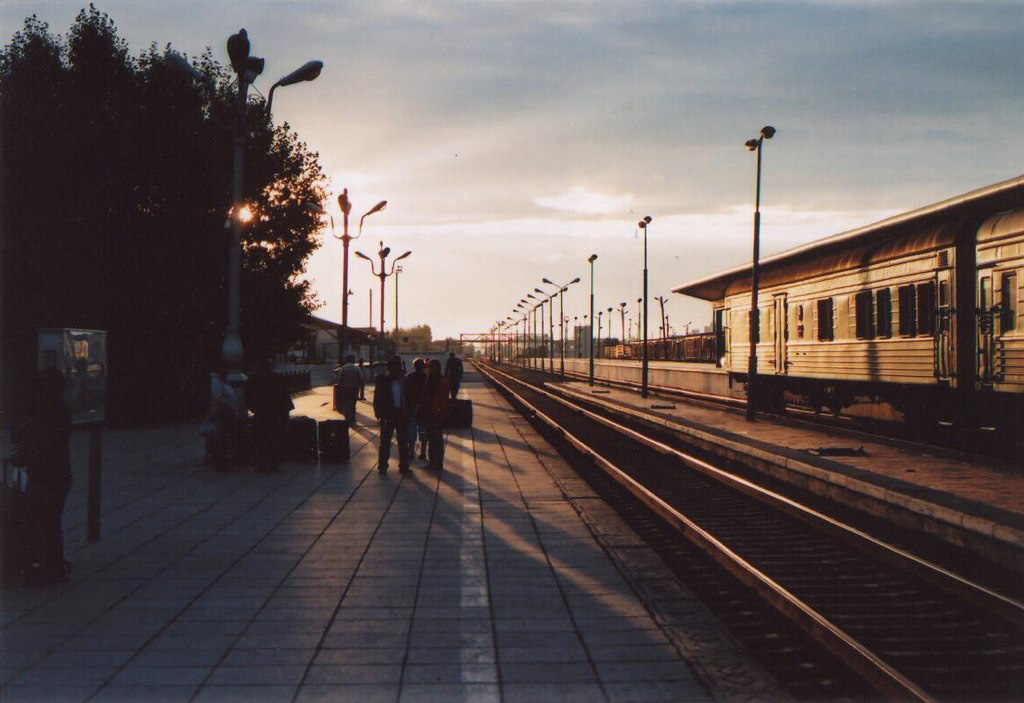The Trans Siberian Railway spans the largest land mass on Earth, officially starting in Moscow and finishing in either Vladivostok, Russia’s most eastern city, or in Beijing by passing south through Mongolia via the Trans Mongolian line. Intrigued by the possibility of travelling from central Europe to North-Eastern China solely by land, we chose the latter.
After a few days in Berlin it was time to board our train to St. Petersburg. As we had bought our tickets through DB Bahn we made the mistake of presuming that our train would be German and thus, to some extent, English speaking. However the “Vash Passport!” demand that greeted us as we boarded the train told a different story.We quickly identified the speaker as our provodnitsa, the term for the infamously strict female train attendants, and waited for the journey to start. But the consequences of our linguistic presumptions soon posed a large problem. As it was a 36-hour journey we had naively presumed there would be some way to buy food on board the train. And that may have been the case, but despite our Russian phrase book and best attempts at body language (something not really understood in Russia) the fact that it was an exclusively Russian speaking train meant we never found out. Thankfully we had brought some basic supplies with us but we still arrived in St. Petersburg a day and a half later very tired and somewhat malnourished.

The first time you arrive in Russia it is a strange experience. As a westerner, the familiar faces of the Russian people are juxtaposed with the completely unfamiliar language, alphabet and culture – it is like you have stumbled upon a lost world or a parallel universe. Equally, the first night in Russia is also one to remember. Or not, as the case will most likely be. After getting ushered out of our hostel by an eager and extremely friendly staff member, the power of the Russian shot measurement was unleashed, and once the initial hit of the famous soviet juice was eased by a tactical slice of lemon, one shot soon became somewhere well above ten. Normally spontaneous night outs are relatively harmless, but spending my first night in St. Petersburg blind drunk was not the safest choice and it was only by some form of divine intervention that we woke up safely in our hostel the next morning. As you can imagine the next day’s plans were not quite as punctual as we had hoped but the glory of St. Petersburg, often referred to as the “Venice of the North”, is not one to be missed and we wandered the lengthy Nevsky Prospect and enjoyed the fantastic architecture for the next couple of days.

Soon it was time to leave St. Petersburg and board a horribly uncomfortable night train south to Moscow. Moscow boasts the world’s highest concentration of billionaires and this certainly does not seem unlikely whilst making your way around the city. Everywhere you look you seem to see evidence of this, whether it be the vehicles that grace the roads or in the clothes that you see on the street. The city is bling; if you are rich, you most certainly show it. Regardless of whether you can associate with the ostentatious Muscovites, the city is still magnificent. The grand pre-soviet architecture is contrasted with the ominous soviet buildings commissioned by Stalin. A personal favourite of these were the seven Gotham-esque buildings known as the Seven Sisters. The story goes that Stalin envied the grand architecture of U.S. cities, such as Chicago, and did not want to be bested in any way by a capitalist country. So these seven unique buildings were created and spaced throughout the city. However, after the majority of construction Stalin decided that they looked too western and ordered a huge red star to be erected at the top of each. The result is seven buildings that are simultaneously magnificent and imposing. Stalin’s reign may have ended over 50 years ago but his influence and legacy are still very much evident in the city today.
After witnessing some of Moscow’s other notable attractions, such as the wonderfully decorated Metro, the Kremlin and Lenin’s eerie mausoleum, it was time to get the train east. We made sure to make a visit to the supermarket beforehand and stocked up on vodka and dehydrated foods – unlike the other train, we were aware there was going to be no canteen, just a samovar. We had been warned that because our train was Mongolian it was important to get on early and claim our (reserved and pre-purchased) cabin as quickly as possible. It turned out there were two types of trains on the Trans Siberian Railway: Russian trains and Mongolian trains. We were only aware of the Russian trains and their stories of drunken comradeship. What we had not heard of was that there were also Mongolian trains that were populated by gangsters who smuggled meat, cheese and clothes into their home country.Unfortunately this was the type of train that we were getting. These gangsters need all the cargo space they can get and if they get to your cabin first then there is not much you can do about it; the trains are run by a few small Korean women and their job is to maintain the samovar and clean things, not to confront large Mongolian men. Luckily our cabin was only partially filled with cheap handbags and dried meat and we managed to subtly remove it before we reached any kind of border control.
The train line in Siberia acts as both transport and a market, and our arrival at each stop was greeted by a hoard of locals looking to buy some of the train’s cargo. Boxes of clothes and handbags were taken out onto the platform and the bizarre mannequins that littered the carriages were hung from the windows for shoppers to see. Once we had settled into our unusual surroundings and became accustomed to keeping an eye on our possessions we began to enjoy the journey. The scenery in Siberia is incredible; forests of an endless size interspersed with vast grasslands. The smell was also unforgettable as the great forest fires that gripped Russia earlier in the summer often lent a strong smoky scent to the cool night air.
After five days of watching the vast scenery slowly change we arrived in Ulaanbaatar. Whilst on the train from Moscow I noticed that the male gangsters had a strange trait of rolling up their shirts to expose their rotund rice bellies. This continued to happen when we arrived in Ulaanbaatar and we found out that it was trait with two reasons. Firstly, it was an effective way to cool off in the summer, and secondly, it showed off your large manly belly. Apparently in Mongolia the larger the belly you have the more respect you demand, and this results in men of all shapes and sizes walking around with their shirts rolled up. The worst case we ever saw of this was definitely on the train where the enormous gang leader walked around constantly shirtless and would aggressively slap his belly to intimidate others. Once we had spent a couple days in the city and a couple out in the grasslands it was time to get back on the train towards our final destination of Beijing.

Thanks to some petty international politics that meant that the train bogies had to be changed, the border between China and Mongolia took a gruelling 8 hours to cross. This was made considerably worse by the toilets being locked the entire time. We finally began moving again and the desolate landscape of the Gobi desert was slowly replaced by the green valleys of rural China. Despite being fully aware of the vast population of China, the sheer number of bodies present in even the rural areas was astounding. Small villages gave way to towns, then finally to a general urban sprawl. By the time we arrived in Beijing we must have laid eyes on, quite literally, millions of people.
After we had got our heads around Beijing’s population we then had to try and comprehend the physical size of the city. Beijing is huge – to walk a block can take over half an hour, and an hour-long taxi ride is not uncommon. Luckily the city is blessed with a fantastic subway system so getting places was relatively painless. Although the difference in language and alphabet was similar to being in Russia for the first time, Beijing felt less disorientating. This may have been due to western left overs from the Olympics, such as the English announcements on the subway, or perhaps due to the fact that in Beijing we were obviously tourists whereas in Russia we could pass for Russians, provided we didn’t speak. Compared to what was offered in Mongolia the food was incredible and as hungry travellers the focus of our first few days was to sample this fine cuisine. Instead of chippies they had street vendors and lively night markets selling anything from chow mein to fried scorpions. However, these markets are not for the fainted hearted as we dined on various strange delicacies, such as foot long shallow fried centipedes and chicken hearts on sticks. Once we refuelled we began to explore the city’s various historic sites, such as Tiananmen Square, the Forbidden City and the Summer Palace. Nowhere else on our trip could quite compete with Beijing for its mixture of ancient and modern culture. From Tiananmen Square, famous for the 1989 protests, you can see the portrait of General Mao adorning one of the gates of the Forbidden City, a set of buildings that date back to the Ming Dynasty in the 15th Century. This clash of history and culture is one found throughout the city and what makes it a truly fascinating place to visit.

Travelling such a large distance by land is a guaranteed way of experiencing a variety of cultures. Throughout the Trans Siberian and Trans Mongolian railways you can experience everything from the forgotten edges of Europe in Russia to the unparalleled fusion of ancient and modern culture in Beijing. But no matter what you read or see it is only first hand experience than can do these places justice. If you want to discover more about our vast Northern Hemisphere then taking a train 5,000 miles across it is not a bad way to start.
Words: Paddy Withams

